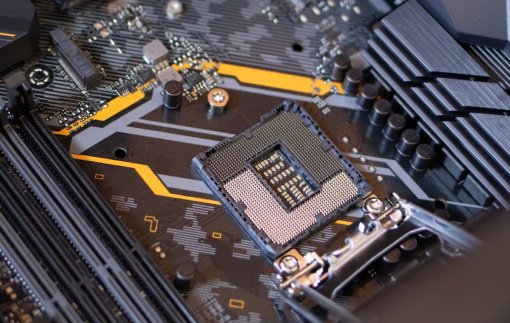Maritime Connectivity: Jotron's Contribution to Safer Seas
In an increasingly interconnected world, reliable maritime communication is essential for safety and efficiency on the seas. With vessels carrying everything from essential goods to passengers, robust connectivity has become a lifeline for the maritime industry. Jotron, a leader in communication technology, has been at the forefront of advancing maritime connectivity solutions.
By developing state-of-the-art communication and safety systems, Jotron is enhancing both routine operations and emergency responses, contributing to safer and more secure maritime environments. This article explores Jotron’s role in revolutionizing maritime connectivity, examining how its technologies are helping to make the seas safer for all.

Maritime connectivity plays a pivotal role in modern-day shipping, emergency response, and passenger transport. From cargo ships traversing international waters to rescue teams responding to distress calls, reliable communication systems are essential for safe and efficient operations. Jotron’s dedication to advancing maritime connectivity addresses these diverse needs, providing technology that enhances navigation, coordination, and safety on the water.
One of the cornerstones of Jotron’s maritime offerings is its GMDSS (Global Maritime Distress and Safety System) solutions. These systems, designed to enhance communication during emergencies, allow vessels in distress to communicate quickly and reliably with nearby ships and coast stations. Jotron’s GMDSS products are engineered with high durability, enabling them to withstand challenging maritime conditions, and ensuring they function reliably when they’re needed most. With these technologies, Jotron empowers mariners to respond swiftly in emergencies, reducing response times and enhancing rescue operations.
Satellite communication is another critical area where Jotron has made significant advancements. By incorporating satellite connectivity into its maritime systems, Jotron provides vessels with a secure and stable communication link, even in remote areas where traditional radio or cellular connections are unreliable. This capability is essential for vessels traveling across vast oceanic distances, allowing crews to maintain constant contact with headquarters, report on vessel status, and receive real-time navigation updates. With satellite integration, Jotron’s solutions offer continuous connectivity, supporting both routine operations and critical safety communication.
Jotron’s AIS (Automatic Identification System) solutions add another layer of safety by enabling vessels to transmit their location, speed, and course to other ships and shore-based stations. By providing real-time vessel tracking, AIS helps prevent collisions and enhances situational awareness for maritime operators. Jotron’s AIS systems are used by a wide range of vessels, from commercial cargo ships to passenger ferries, allowing operators to make informed decisions, avoid hazards, and ensure safer routes through congested or challenging waters.
Another key area of Jotron’s maritime connectivity solutions is its range of VHF (Very High Frequency) radios, which remain a staple in maritime communication. Jotron’s VHF radios are built to withstand harsh sea conditions while delivering clear, uninterrupted communication. Used for both routine and emergency communication, Jotron’s VHF radios support reliable communication between vessels and shore stations. In critical moments, such as during rescue missions or emergency evacuations, the reliability of VHF communication ensures that all involved parties can coordinate effectively, enhancing overall safety on the water.
To further improve user experience, Jotron has invested in designing intuitive interfaces and streamlined navigation within its communication systems. Mariners must often operate communication equipment under high-stress conditions, so Jotron’s systems are built with simplicity in mind, making it easy for users to access critical functions quickly. Clear, user-friendly displays and straightforward controls allow crew members, regardless of technical background, to effectively operate Jotron’s systems when speed and clarity are essential.
As part of its mission to support safer seas, Jotron is also focusing on sustainability in its product designs. The company has incorporated energy-efficient technology into its maritime solutions, reducing power consumption without sacrificing performance. By using sustainable materials and optimizing battery life, Jotron contributes to the maritime industry’s shift toward greener, more environmentally friendly operations. This sustainability focus ensures that Jotron’s products not only enhance safety but also align with global environmental goals.
Jotron’s innovative solutions extend to coastal surveillance and vessel traffic management systems as well. These systems allow coastal authorities to monitor vessel movements, track maritime traffic, and coordinate with ships to prevent accidents and manage high-traffic areas safely. By integrating these systems with Jotron’s communication technology, coastal stations gain a comprehensive view of maritime activity, enhancing safety in busy ports and along coastal regions.
The integration of IoT (Internet of Things) technology into Jotron’s maritime systems represents another leap forward in maritime safety. With IoT capabilities, Jotron’s equipment can provide real-time data on the health and performance of various systems aboard a vessel, alerting crews to potential issues before they escalate into critical failures. This proactive approach to maintenance and diagnostics minimizes the risk of equipment malfunctions at sea, allowing crews to take preventive actions and ensuring continuous safety throughout the journey.
Jotron also places a strong emphasis on cybersecurity in its maritime communication solutions. As connectivity grows, so does the potential for cyber threats in maritime environments. To address this, Jotron integrates robust encryption and secure communication protocols within its systems, ensuring that sensitive data remains protected. By prioritizing cybersecurity, Jotron is helping to create safer digital environments on the seas, allowing maritime operators to communicate securely and without interruption.
Looking ahead, Jotron continues to innovate with future-focused technologies like 5G and remote communication capabilities, paving the way for a new era of maritime connectivity. With 5G, Jotron aims to increase data transfer speeds and reduce latency, allowing for more efficient and responsive communication systems on vessels. Remote capabilities will also enable off-site support for communication and safety systems, reducing the need for physical interventions and enhancing the efficiency of on-board maintenance.
Through its commitment to maritime safety, Jotron is helping to create a connected and secure future for global shipping, transportation, and emergency response. By advancing technologies that provide real-time data, resilient connectivity, and robust safety protocols, Jotron contributes to a maritime environment where operators are empowered with the information and tools they need to navigate safely. As the seas become more interconnected, Jotron’s dedication to connectivity and safety is helping to shape a maritime industry that is prepared for the challenges of tomorrow, ensuring that mariners, passengers, and cargo can journey with confidence and security.


